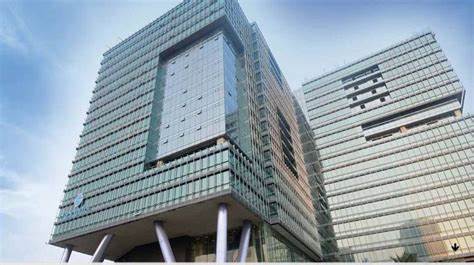Green-certified office space in India jumps 36% since 2019

Green-certified office space in India jumps 36% since 2019
The growth of green-certified office buildings in India’s top six cities has seen a significant increase, according to a report by CII-CBRE. In June 2023, the area covered by green-certified office spaces in these cities surged by more than 36 percent compared to levels recorded in 2019. This growth reflects a positive trend toward sustainable and environmentally friendly real estate development in India.
The report highlights that Bengaluru, the National Capital Region (which includes Delhi and its surrounding areas), and Mumbai were the leading cities in terms of green-compliant office spaces. Together, these three cities accounted for a substantial 68 percent share of the total green-certified office space as of June 2023. This indicates a strong commitment in these major metropolitan areas to incorporating eco-friendly and energy-efficient features into their commercial real estate projects.
The increase in green-certified office spaces signifies a growing awareness and importance placed on sustainability and environmental responsibility in the Indian real estate sector. Green-certified buildings typically prioritize energy efficiency, reduced environmental impact, and better working environments for occupants. This trend aligns with global efforts to combat climate change and create more sustainable urban environments.
The growth of certified green office spaces in India has been quite substantial, with a compounded annual growth rate (CAGR) of approximately 7.1 percent over the past five years, according to the CII-CBRE report. This indicates a significant shift towards environmentally sustainable workplaces, reflecting a broader global trend towards environmental responsibility and sustainability.

Bengaluru emerged as the leader in this regard, boasting a remarkable 104.5 million square feet of green-certified office spaces, which accounts for approximately 30 percent of the total green office space in the six major Indian cities covered by the report. The National Capital Region (NCR), encompassing Delhi and its surrounding areas, followed closely with 70.2 million square feet, constituting a 21 percent share. Mumbai ranked third with 56.6 million square feet, representing about 17 percent of the total green office space.
Hyderabad, Chennai, and Pune also contributed significantly to the growth of green office spaces, accounting for 15 percent, 9 percent, and 8 percent of the total, respectively. This distribution highlights the increasing adoption of sustainable building practices and the demand for environmentally friendly work environments across major Indian cities.
The report’s findings indicate that both developers and businesses are recognizing the value of green-certified office spaces, which offer energy efficiency, improved working conditions, and reduced environmental impact. This growth trend is expected to continue as sustainability becomes an integral part of the Indian real estate landscape, promoting healthier and more eco-friendly workplaces.
The real estate market in India has witnessed notable activity in various sectors, as reported by the CII-CBRE report. Between January and June of this year, office leasing reached a significant 26.4 million square feet. Bengaluru, Chennai, and the National Capital Region (NCR) collectively accounted for 60 percent of this total, demonstrating the continued demand for office spaces in these key metropolitan areas.
The industrial and logistics (I&L) sector also experienced substantial growth during this period, with space taken up expanding by approximately 35 percent to reach 19.1 million square feet. This reflects the increasing importance of logistics and warehousing facilities, driven by the growth of e-commerce and supply chain operations.
In the retail sector, leasing activity surged by 24 percent, reaching 2.9 million square feet. This could be indicative of a revival in the retail segment as consumer confidence and spending recover.
Additionally, the report highlights positive trends in the residential market. Residential sales exceeded 150,000 units during the first half of the year, surpassing sales reported in the same period in the previous year (January-June 2022) by approximately 4 percent, and those in the second half of the previous year (July-December 2022) by around 6 percent. This suggests sustained momentum in demand for residential properties.
Developers responded to this demand by launching over 150,000 new housing units in the first half of 2023, marking an annual growth rate of 11 percent. This indicates that the real estate sector in India is adapting to changing market conditions and consumer preferences, aligning with the evolving needs of the population.
The CII-CBRE report paints an optimistic picture for the Indian real estate market, projecting that housing sales could reach or even exceed 300,000 units by the end of the year. This positive outlook is despite the anticipated lagged impact of higher interest rates, which may have initially affected buyer sentiment but could potentially be offset by other favorable factors.
In the office space segment, the report anticipates an annual stock supply of 51-53 million square feet (msf) for the entire year 2023. Bengaluru, Hyderabad, and the Delhi-National Capital Region (NCR) are expected to lead in terms of office space completions. This indicates that the commercial real estate sector, particularly in these cities, remains robust and continues to attract significant investments.
Furthermore, the report suggests that investment activity in the real estate sector is likely to gain momentum in the second half of the year (July-December 2023). Overall investments are projected to range between $6-6.5 billion during this period. This signals the confidence of investors in the Indian real estate market and indicates a positive outlook for future developments and projects.
These projections reflect the resilience and adaptability of the Indian real estate sector, which continues to evolve in response to changing market dynamics and investor sentiment. While challenges such as higher interest rates may exist, the overall outlook remains promising, with the potential for growth and expansion in various segments of the real estate industry.




